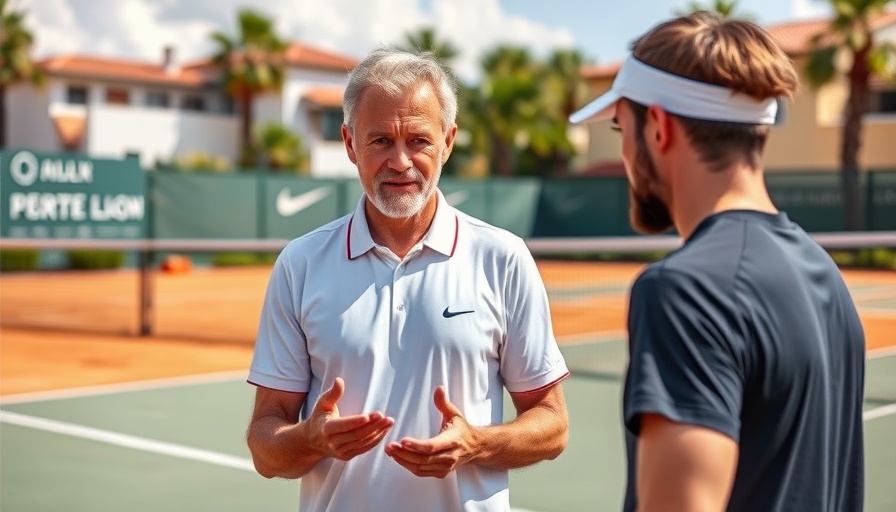
Minimizing Errors: The Key to Elite Tennis Performance
Tennis is as much a mental game as it is a physical one. Players constantly face the pressure to perform flawlessly, which can lead to unforced errors that can decide the outcome of the match. To turn the odds in their favor, athletes must learn how to minimize these mistakes. In a recent video, a seasoned tennis coach shared an insightful tip designed to help players reduce those frustrating unforced errors, an issue that haunts even the best of them. But what does it take to implement these strategies effectively?
In 'Great tip to reduce unforced errors!', the discussion dives into effective tactics to minimize mistakes in tennis, exploring key insights that sparked deeper analysis on our end.
Understanding Unforced Errors
Unforced errors occur when a player makes a mistake without any pressure from their opponent. Whether it's a missed serve or hitting the ball out of bounds, these errors can arise from a variety of factors including fatigue, lack of focus, or poor technique. Why are they so detrimental, particularly in high-stakes matches? The answer lies in their unpredictability. Eliminating these errors can be the difference between winning and losing, especially in close matches. Simply put, a player who can keep their unforced errors to a minimum rises above the competition.
Tips to Enhance Focus on the Court
One essential tactic mentioned in the video is the importance of maintaining focus during play. Players often find themselves distracted; it might be the crowd noise, their opponent's antics, or even their own thoughts. Techniques such as breathing exercises or visualizing successful shots can significantly enhance concentration. Keeping your mind clear allows you to approach each point on its own merits, reducing the chances of making a careless mistake.
Practice Makes Perfect: Drill for Success
Another piece of advice that resonates with the expert is the necessity of practice—specifically, targeted drills that simulate match conditions. Repetition creates muscle memory, which can help players react instinctively in competitive situations. Coaches should implement drills that mimic game pressure, allowing athletes to practice focusing under duress. By being exposed to these scenarios repeatedly, players stand a better chance of reducing unforced errors when it truly counts.
The Role of Technical Skills in Reducing Errors
Furthermore, honing technical skills is essential. Players should be well-versed not just in executing shots, but also in understanding the mechanics behind them. For example, practicing serves or backhands with a focus on form can lead to improved accuracy and reduced mistakes during important matches. In the same regard, players should seek instant feedback where possible, using video recordings of their practice sessions to identify patterns in their game that lead to unforced errors. Understanding the why behind each mistake is fundamental for growth.
Turning Knowledge into Action
By implementing these insights—enhancing focus, drilling strategically, and perfecting technical skills—players can significantly cut down on unforced errors. In tennis, like in life, it’s about understanding your weaknesses and turning them into strengths. The journey to minimize mistakes and elevate performance starts with a single step: a commitment to improvement. Now, more than ever, players should reflect on their training techniques and seek out coaching that complements their growth. After all, reducing unforced errors is not just a tip; it's a pathway to becoming a formidable player on the courts.
 Add Row
Add Row  Add
Add 




Write A Comment